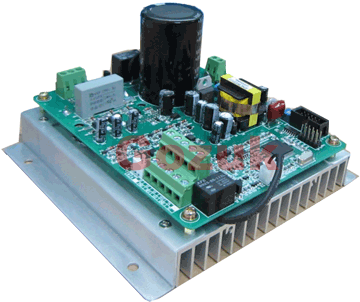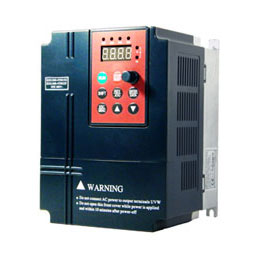How do we select the pump based on system curve?
The best thing to do is obtain a sample of the product you want to pump and give that to the pump supplier of your choice, or have a chromatograph analyses ran on the product with the results to pass to the pump suppliers. The suppliers will run the results with your expected suction and planned head pressures to give you an accurate curve. I believe you are requesting this for a centrifugal pump and not a positive displacement pump. Some of the manufacturers also provide software to help with the pump sizing and provide curves at different rotational speeds if you get a pump with a variable frequency drive. The curves vary with pumps, product and conditions.
What you describe is a static system - that is no changes in the system while operating. That would then be expressed in a point rather than a curve. The system curve is the design flow and head desired viewed as a function of the expected system variations. For example, a pump sized for 100 GPM @ 50 ft tdh will consider the suction head. If coming from a supply tank the TDH will reduce as the level falls. So if the supply tank level declines by 10 feet the pump total discharge head (suction head + what the pump generates) will also fall by 10 feet. To maintain the design flow with the resulting variable head the pump speed would need be changed.
The system head curve is the graphical representation of the system total dynamic head (static + friction + minor losses) and how it increases with increasing flow. It is a curve since friction and minor losses increase as a function of the square of the velocity. The pump curve is a representation of pump operating characteristics, also graphed as flow and head. In selection of a pump to best meet your system conditions, you simply overlay pump curves on your system curve. Select a centrifugal pump such that the best efficiency point on the pump curve is nearly at or at the point on the system curve which represents your desired delivery flow and TDH. There are other characteristics needing analysis, such as NPSHa vs NPSHr, but your selection starts as described.
What you describe is a static system - that is no changes in the system while operating. That would then be expressed in a point rather than a curve. The system curve is the design flow and head desired viewed as a function of the expected system variations. For example, a pump sized for 100 GPM @ 50 ft tdh will consider the suction head. If coming from a supply tank the TDH will reduce as the level falls. So if the supply tank level declines by 10 feet the pump total discharge head (suction head + what the pump generates) will also fall by 10 feet. To maintain the design flow with the resulting variable head the pump speed would need be changed.
The system head curve is the graphical representation of the system total dynamic head (static + friction + minor losses) and how it increases with increasing flow. It is a curve since friction and minor losses increase as a function of the square of the velocity. The pump curve is a representation of pump operating characteristics, also graphed as flow and head. In selection of a pump to best meet your system conditions, you simply overlay pump curves on your system curve. Select a centrifugal pump such that the best efficiency point on the pump curve is nearly at or at the point on the system curve which represents your desired delivery flow and TDH. There are other characteristics needing analysis, such as NPSHa vs NPSHr, but your selection starts as described.
Post a Comment:
You may also like:
Featured Articles
Non-Enclosure Variable Frequency Drive ...
 No enclosure (cover), reducing installation space and cost effective. Widely used in All-In-One control cabinet. Keep the same ...
No enclosure (cover), reducing installation space and cost effective. Widely used in All-In-One control cabinet. Keep the same ...
 No enclosure (cover), reducing installation space and cost effective. Widely used in All-In-One control cabinet. Keep the same ...
No enclosure (cover), reducing installation space and cost effective. Widely used in All-In-One control cabinet. Keep the same ...Variable frequency drive application ...
 Variable Frequency Drive (VFD) can be used in lots of fields. Variable frequency drives are widely used to control the speed of ...
Variable Frequency Drive (VFD) can be used in lots of fields. Variable frequency drives are widely used to control the speed of ...
 Variable Frequency Drive (VFD) can be used in lots of fields. Variable frequency drives are widely used to control the speed of ...
Variable Frequency Drive (VFD) can be used in lots of fields. Variable frequency drives are widely used to control the speed of ...Variable frequency drive in HVAC ...
 Variable frequency drives (VFD) have been used for HVAC systems in buildings for more than 40 years. But only in recent years, ...
Variable frequency drives (VFD) have been used for HVAC systems in buildings for more than 40 years. But only in recent years, ...
 Variable frequency drives (VFD) have been used for HVAC systems in buildings for more than 40 years. But only in recent years, ...
Variable frequency drives (VFD) have been used for HVAC systems in buildings for more than 40 years. But only in recent years, ...Variable Frequency Drive Harmonics and ...
A discussion of the benefits of variable frequency drives often leads to a question regarding electrical harmonic distortion ...
Three phase inverters
 In the variable frequency drive rectifier paper, it explains how to go from three phase alternating current voltage to a direct ...
In the variable frequency drive rectifier paper, it explains how to go from three phase alternating current voltage to a direct ...
 In the variable frequency drive rectifier paper, it explains how to go from three phase alternating current voltage to a direct ...
In the variable frequency drive rectifier paper, it explains how to go from three phase alternating current voltage to a direct ...
VFD manufacturers
